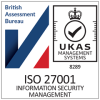The drive to digitisation of the wealth industry is well and truly underway. Sticking to the status quo of the traditional practices is no longer an option, and many institutions have succeeded in efforts to implement technology to transform operations, especially in back office and operations. We will see the continuation of technology spend and specifically, artificial intelligence (AI) being in a dominant position as the focus of efforts to evolve the front office and client experience – an area of the business struggling to adapt and embrace new technology. In this year’s World Wealth Report, Capgemini report that AI was ranked the number 1 technology in terms of impact on enhancing wealth managers’ capabilities. This belief, however strong, masks the reality of what lies beneath the desire to adopt such technology to ‘bridge the advice gap’. A question asked by the regulator is “can decisions that materially affect people’s lives be outsourced to a machine?” – and rightly so – the ethical and professional considerations for AI are many, but even as vendors rush to apply AI to these problems, there remains tremendous practical barriers for firms looking to embrace AI technology as a part of their strategy.
Beyond the Proof of Concept
A Proof of Concept (POC) is a vital element to learning quickly, whether an idea or solution has real business value. It can help answer technical questions, provide insight from real clients and increase the institutional knowledge of the domain. Most importantly, the POC can avoid committing to the huge cost and risk of embarking on initiatives doomed for failure. Within the space of AI though, it seems the POC is still a case of a solution searching for a problem, driven by a top down demand for firms and vendors to be seen to ‘doing something in AI’. Companies find it difficult to make the transition from thinking about AI as a source of innovation to a critical source of business value. Many are stuck in a series of POCs, and the lack of a clear, funded, incremental AI roadmap means there is little traction from which to build momentum. The reality for many organisations is that they AI is not something they are geared up for – not just from a skills perspective.
In such a nascent space, the level of experience and intuition about what makes a viable candidate for a POC is in some cases lacking. What’s more, the methodology for applying AI is so different from “traditional” software implementation projects, which companies are typically set up to deliver. Changing the status quo requires agility, openness to trying a new way of working and the ability to recognise when an idea has merit, and when it just won’t work. This presents cultural issues around the notion of success and delivery. Even when POCs are successful, there needs to be a way to embed the new capability within the wider operation. The integration of AI into the wider business environment is as important as technology.
The question that ought to be on the table from the outset is not whether there are good ideas of where to apply AI, but whether the firm is ready for AI.
Assessing Readiness
The hype around AI can often mean many wealth management firms are striving to benefit from AI without getting the fundamentals right first. There are five key elements to assessing readiness when it comes to AI.
Step 1 – Establish a solid AI business case and connect it to your strategy
This requires a detailed and honest look at AI from its actual capabilities and limitations in a specific, real-world context. Working with an external partner who can help unpack some of these important questions is the best approach where the skills and experience are not in house. The partner should have a proven method for compiling the business case to ensure the output of the process is something which can form the basis of the important priority calls to come.
A wealth manager needs to consider the following questions:
- What are your organisation’s strategic objectives and vision?
- How can AI help you achieve your desired outcomes?
- What does ‘value’ mean to your company? What does it look like? And how do you currently calculate it?
- Have you thought about what AI use case(s) will provide most value for you?
- Are these use cases feasible? Do you have the necessary elements—data, technology, capabilities, etc.—within your company, or with partners, to deliver the use case(s)?
Step 2 – Breaking down the problem
Einstein famously said, “If I had an hour to solve a problem, I’d spend 55 minutes thinking about the problem and five minutes thinking about solutions”, an apposite thought when considering an AI strategy. A critical skill in data science is the ability to decompose a data-analytics problem into pieces such that each piece matches a known task for which tools are available. Recognising familiar problems and their solutions avoids wasting time and resources reinventing the wheel. It also allows people to focus attention on more interesting parts of the process that require human involvement — parts that have not been automated, so human creativity and intelligence must come into play.
To consider the available options requires people who have a fundamental understanding of AI and how it works. This includes the senior management who sponsor AI programmes. It is important to foster an understanding of data science within the organisation. Data-analytic thinking enables people to evaluate proposals for AI projects. With so many ideas for applications of AI on the table, and with the risk involved in impacting clients, being able to assess the proposal systematically and decide whether it is sound or flawed is crucial. This does not mean that even a well-formed idea will succeed however — AI initiatives can, and will fail, it is part of the process – but to give the best chance, teams should be able to spot obvious flaws, unrealistic assumptions, and missing pieces.
Step 3 – Fuel your AI strategy with data
In terms of the key business outcomes – revenue growth, reducing operational costs, improving customer experience; the primary factor is to provide better information to enable timely and optimal business decisions. There is a myth that AI provides that information. It actually provides a way of making sense of vast amount of disparate sources, an automated way to get around the difficult job of fixing legacy data issues that stem from not having mature processes and systems, which capture and maintain high quality data.
In reality, good data is not the product of AI, but the fuel behind it, and for AI to be effective, it needs large, quality data sets to analyse. For most organisations still working hard to tackle siloed and legacy technology platforms, this data asset is not one they possess, and it has been cited by many as they key barrier to AI progress.
Step 4 – Map the technology systems used throughout your client journeys
Once the candidate applications of AI are defined, and the data sources mapped, a useful view of the roadmap might be to align them with the end to end client journeys. This way, there is a clearer view of how AI initiatives will help support the desired experiences, and more importantly, how the AI models themselves will be surfaced within the system(s) that orchestrate clients and internal staff interactions across the lifecycle. Client lifecycle management (CLM) systems play such a vital foundational role of orchestrating the end-to-end journeys and bringing in AI at the right points.
Where this is not in place, and there is a lack of unified data and processes supporting the operations, it will prevent wealth managers from escaping the inertia of the POC. In these cases, it is important that firms first reconsider some more realistic objective around the underpinning systems which deliver on the key business outcomes, whilst also laying the data foundation for AI in the longer term.
The most practical and pragmatic first step is to focus on how to align and unify all customer data, across the set of target client journeys. Achieving a true single view of client data, across the entire lifecycle is not a simple step, but presents far more immediate value across the entire organisation than a standalone AI model might. Indeed, CLM and Client Relationship Management (CRM) systems capabilities which orchestrate client journeys and help manage data, are the platforms with which to embed and rollout AI as a part of an adopted workflow. Without such workflows in place, AI models are likely to be siloed, executed by disconnected teams, with limited value.
It is not a case of ‘down tools’ on AI either – there are huge opportunities for reuse in the work on getting the right platform in place. Defining the end to end client journeys and related rules, data, workflows, views, all contribute to a very detailed understanding which can be then be leveraged in AI initiatives. Having AI leaders working alongside the teams building this foundation will foster the knowledge required for subsequent AI focused solutions.
Step 5 – Don’t forget about your advisors
At the upper end of the wealth tier, where the wealth management model still relies on high touch client relationships, the balance of time spent between administration and value-added, client facing work is still too even. If this is to be addressed by any technology, advisors first need to trust in that technology and adopt it, otherwise data powered initiatives will not be a success. The adage – rubbish in, rubbish out remains as true for AI as it did for reporting and business intelligence. The necessity of getting the interface between humans and the systems they use, is made even stronger where AI is concerned, due to the demand for a high level of confidence, accuracy and transparency in all things AI driven.
Building a culture that is open to adopt best practice in relation to data and the use of technology is the subject of another article, but it starts with having a cross functional group that share a vision, and that can represent the different needs of different parts of a business in defining areas where technology can add the most value. It is likely that the most value from technology in wealth still lies in areas outside of AI – in platforms and systems that deliver on providing a consistent way of seeing the client, and allowing a firms people to nurture and effectively manage data as a valuable asset. Should firms manage to establish that foundation and grow that asset, then wealth management will be made more ready for AI to make the positive impact that is being predicted.





